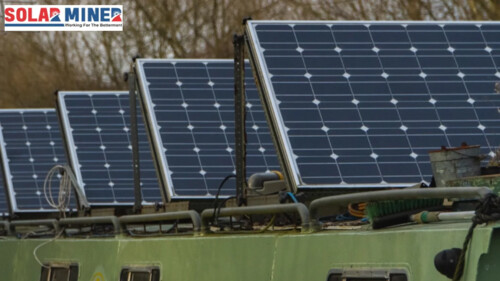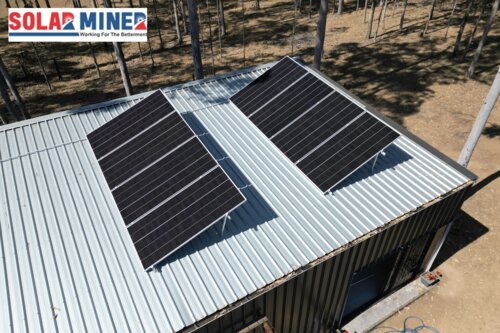For countless Australian homes, a 6.6 kW solar system has long been a prevalent choice. It offers a balance between affordability and expressive generation, matched to many medium-sized households.
Current technological advances and policy changes in 2025 are now taking these systems to the next level, both in performance and value. This post explores the latest enhancements you’ll find in 6.6 kW systems, how these upgrades influence you, and what to watch for when picking or upgrading your system.
What is a 6.6 kW Solar System?
A “6.6 kW solar system” classically means a photovoltaic (PV) array on your roof rated to about 6.6 kilowatts of peak DC capacity. Installer guides in Australia say that this often includes around 16-18 panels (depending on panel wattage) paired with a ~5 kW inverter.
For example:
- Numerous homes installing a 6.6 kW array will produce roughly 24-28 kWh per day, depending on roof orientation, shading, and local conditions.
- It habitually requires about 30 m² or so of roof space (varies by panel size) for installation.
- The size has been general because it hits a “sweet spot” of cost vs output for numerous Aussie homes.
Why the 6.6 kW Size Still Matters?

Despite greater system sizes being available, the 6.6 kW remains pertinent because:
- It fits several standard homes with moderate energy usage and distinctive roof space.
- It remains well-suited with local rebate and feed-in tariff structures.
- It offers decent payback periods when installed properly and paired with self-consumption strategies.
However, as energy usage upsurges (home offices, EV charging, heat pumps) some homeowners are looking at higher systems.
Key Enhancements in 2025 for 6.6 kW Systems
Here are some of the most vital recent upgrades and enhancements that affect 6.6 kW systems in Australia today.
1. Higher Efficiency Solar Panels
One of the chief changes is in solar panel efficiency.
- Panels are progressively hitting 24-26% efficiency in mass production, and premium models are approaching or exceeding 27%.
- New cell technologies (e.g., advanced back-contact cells, bifacial modules) are improving performance, particularly under less-than-ideal conditions (shade, soiling, warmer climate).
- What this means for a 6.6 kW system: you can get more output from the same roof space, or attain the same output with fewer panels/less area. This is expressly helpful where roof space is tight or orientation isn’t perfect.
2. Smarter and More Flexible Inverters
The inverter, the device that converts solar DC power into usable AC power, has also seen upgrades:
- In 2025, various inverters reach peak efficiencies of 97-98% and comprise advanced features like real-time monitoring, smart algorithms, grid compliance, and remote diagnostics.
- Hybrid and battery-compatible inverters are now more mutual, meaning a 6.6 kW system can more effortlessly be paired with a home battery in the future.
- Improved grid integration: As grid rules and export conditions evolve, some inverters can healthier handle dynamic voltage, bidirectional flows (solar + battery + grid) and contribute to virtual power-plant arrangements.
- In practice: If you install a 6.6 kW system today with a modern inverter, you’re much more “future-proof” for battery additions, EV charging and changing grid rules.
3. Better Self-Consumption & Storage Integration
Energy savings aren’t just about producing more power; how you usage it matters. Topical enrichments contain:
- Pairing solar systems with home batteries is progressively viable even with 6.6 kW systems. Storage permits you to use your solar power later (rather than exporting it at low rates).
- Smart home energy management: systems now propose apps and monitoring that let homeowners see production, consumption, export and battery state in near-real time. This benefits shift usage to daylight hours, cultivating self-consumption.
- Enhanced rebate and incentive regimes are making battery+solar combos more reasonable, thereby growing the value proposition of a 6.6 kW rooftop system.
So for a homeowner, a 6.6 kW system with decent design and monitoring can capture more of your own produced power and decrease reliance on the grid further.
4. Enhanced Durability & Reliability Under Australian Conditions
Australia has a harsh environment (heat, storms, dust, etc). Recent enhancements to solar hardware reflect this:
- New coatings and materials mean panels are more resilient to heat, hail, corrosion and long-term degradation.
- Inverter brands are offering lengthier warranties and improved local support, meaning less risk of primary system failure or costly replacement.
- Installers and suppliers are also placing superior importance on proper site assessment (roof orientation, shading, roof strength), which aids in maximising the performance of 6.6 kW systems.
This means when you select a decent installer and quality hardware, your 6.6 kW system is likely to perform consistently for 20 + years with strong output.

5. Regulatory & Incentive Developments
The environment for solar in Australia continues to evolve:
- From 1 July 2025, new incentive changes apply across many states: rebates, feed-in tariff updates, and battery incentive schemes.
- The small-scale technology certificates (STCs) system still provides upfront discounts for rooftop systems.
- There’s also a pivot towards smarter grid integration (virtual power plants, export management), which means homeowners installing now essential hardware that can keep up.
For a 6.6 kW system, this means you’ll want to install with hardware/model that is compliant with current and near-future grid rules, and take full benefit of current incentives.
What This Means for Homeowners Choosing a 6.6 kW System
Putting the above enrichments together, here are key takeaways and endorsements for those considering or upgrading a 6.6 kW solar system:
Advantages
- You can now get a higher yield from the same-sized system thanks to panel/inverter upgrades.
- A 6.6 kW size remains cost-effective and suitable for countless households, particularly when paired with smart consumption and probably storage.
- With enhanced hardware, your system is more sturdy and “future-proof” (battery-ready, EV-ready, grid-compliant).
- Incentives and rebates in 2025 are still favourable for homeowners, cultivating payback prospects.
Considerations
- Although 6.6 kW is still decent, for homes with very high usage (multiple EVs, large heat pump, pool, etc), it may be worth considering a bigger system size.
- Roof space/orientation/shade still matter: improvements help, but you cannot entirely compensate for a poorly oriented / heavily shaded roof.
- System design quality is critical: cheap components or sub-standard installation will weaken all the “latest enhancements”.
- Be aware of export limits: some grid areas restrict how much excess solar you can feed back, which affects payback.
What to Ask Your Installer
When you get quotes for a 6.6 kW system, ask:
- Which panel model and efficiency rating? (Aim for 22-26% efficiency if conceivable)
- What inverter brand and model? Is it battery-ready / export-compliant?
- How much self-consumption do they estimate (before & after)?
- Are there provisions for battery integration in the future?
- What warranties apply (panel product warranty, inverter warranty, workmanship)?
- Are the rebates/incentives included in the quote?
- What monitoring app or system is provided so you can track your generation and usage?
Example Scenario
Imagine a suburban Australian home (3-4 people), with a north-facing roof of ~30 m², some moderate shading midday. You install a 6.6 kW system in late 2025 with upgraded 24% efficiency panels and a modern 5 kW hybrid inverter.
The system might produce around 25-28 kWh/day on average. With clever monitoring and shifting major loads (dishwasher, laundry) to daylight hours, you may capture, say, 60-70% of the solar produced for your own use, reducing your grid import meaningly.
If you future add a home battery, the system is already inverter-ready, and you can further increase your self-consumption and blackout backup. The technology upgrades mean you are getting more “bang for your roof” and healthier long-term performance.
Looking Ahead: What’s Next?
- Efficiency of solar panels will continue to advance (some models already exceed 27%), so future systems may produce even more from the same size.
- Integration of home energy systems (solar + battery + EV charger + smart appliances) will become more unified.
- Grid rules may shift further: more dynamic tariffs, more export limitations, or incentives for battery & solar groupings. Installers will essential to design systems with flexibility.
- As component costs continue to fall, and manufacturing improves (including local manufacturing efforts in Australia), the economics of rooftop solar will keep improving.
So, even if you install a 6.6 kW system today, you can expect the system to remain pertinent and proficient for several years.
Conclusion
The 6.6 kW solar system remains a very good choice for many Australian homeowners, but thanks to recent enhancements in panel and inverter technology, improved durability, smarter monitoring and evolving incentive landscapes, a 6.6 kW system in 2025 is much better than what it was a few years ago.
If you are considering installing or upgrading, be certain to select quality components, safeguard that your installation is well-designed for your roof and usage, and choose equipment that is ready for future additions (battery, EV, etc.). In this way, you will maximise savings, reduce your electricity bills, and make a meaningful contribution to your energy independence.




